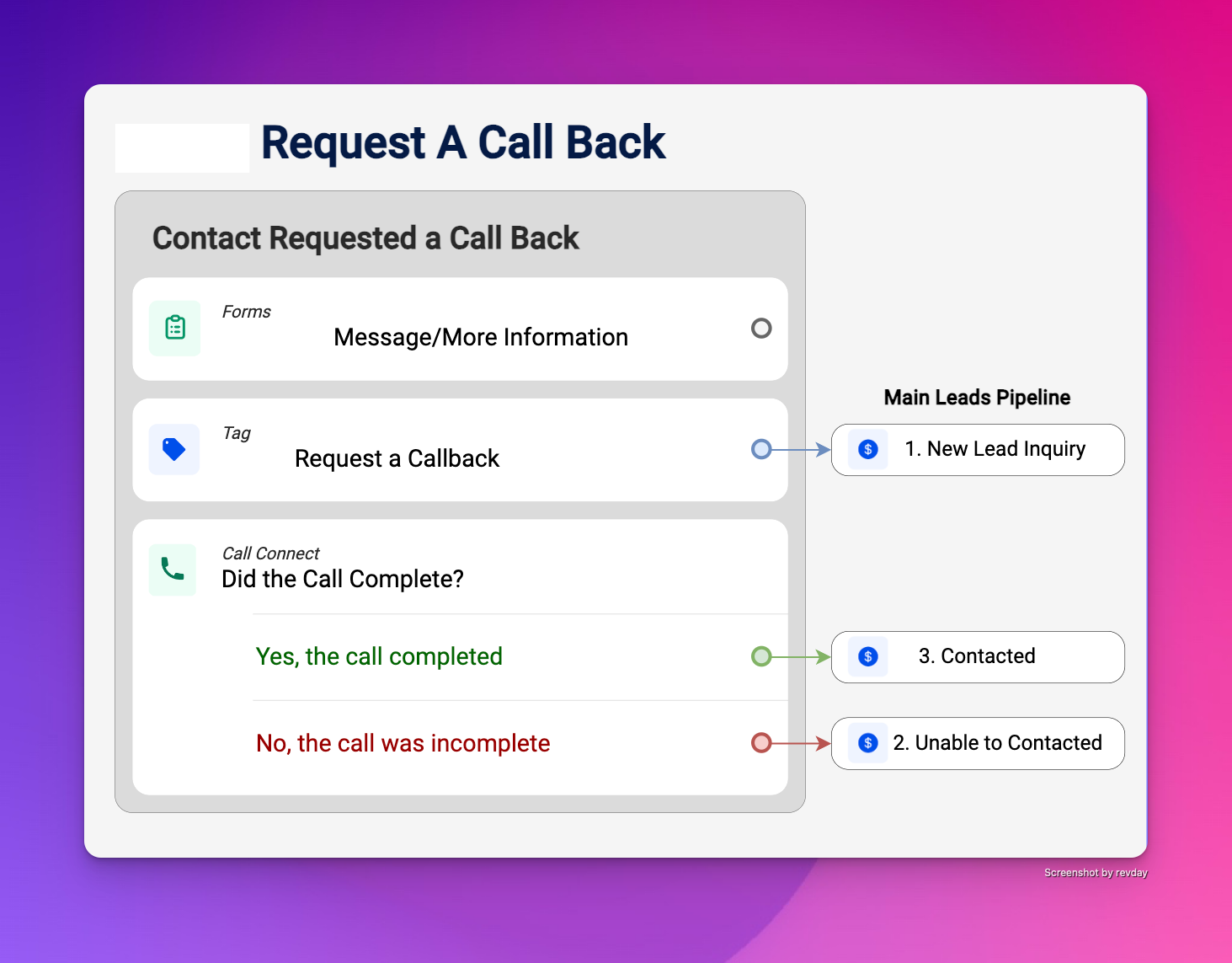
Request a callback: A simple tool for engaging potential customers
Let's discuss the benefits and implementation of a "Callback Request Automation" system. This system enables website visitors to request a call back from a business at their convenience, rather than waiting on hold or having to book a call just to ask a few questions. We will delve into the advantages of this system, including increased customer satisfaction, reduced call abandonment, and improved lead conversion rates.
Listen to Podcast:

What is a 'Callback Request' Automation?
Request a Callback Automation is a clever and effective tool that you can deploy on your business customers website that enables end-customers to request a call back from the business.
A callback is an Interactive Voice Response (IVR) function that allows customers to request a call back from a customer service agent at their convenience, rather than waiting on hold. Once a customer opts for a callback, their phone number is placed in a queue, and the system calls them back once an agent is available. This tool reduces wait times and significantly improves the customer experience.
Why Do Customers Request Callbacks?
Customers typically request a callback for the following reasons:
Customers are busy and they simply want to leave their contact details and be contacted (within 60 seconds with revday)
They don’t want to wait on hold.
The call queue is too long or busy.
No agents are available to take their call (for instance, outside of business hours).
By offering a callback option, you acknowledge the customer’s time and allow them to engage with your service in a more convenient and flexible manner.
How Does the Callback Request Automation Work?
When a customer visits your website, or comes across the Request a Callback link, they can click on the link and provide their contact information. This is where it gets fun. the Callback system is customised to act differently based on the predetermined work days and hours of operation and act accordingly.
When a callback request is made during predetermined trading hours and work days:
Customer received SMS confirmation that their request was received
Request will get assigned to predetermined team member
Team member receives receive SMS, email or in app notification
System then attempts to automatically call the customer/prospect
If no answer, the system follows up with SMS and attempts again in an hour or in a day (whatever the business has determined)
Once a connection is made and call is marked as completed, then the system sends out recap notes in an email and thank you SMS)
When a callback request is made outside predetermined trading hours and work days:
Customer received SMS confirmation that their request was received outside of business hours and that a team member will contact them during business hours)
Request will get assigned to predetermined team member
Team member receives receive SMS, email or in app notification
During business hours the customer receives an SMS letting them know that a call will be made to them shortly to help them prepare
If no answer, the system follows up with SMS and attempts again in an hour or in a day (whatever the business has determined)
Once a connection is made and call is marked as completed, then the system sends out recap notes in an email and thank you SMS)
Benefits of a Callback System
1. Increase Customer Satisfaction
By providing a callback option, you eliminate the frustration customers feel from waiting on hold. Offering them a more convenient way to connect increases their satisfaction and trust in your brand.
2. Reduce Call Abandonment
Long wait times often lead to abandoned calls. A callback system helps mitigate this risk by assuring customers they will be attended to without having to wait in a queue.
3. Shorten Call Queues
Rather than managing high call volumes with limited staff, callbacks allow for a more even distribution of customer interactions, reducing the strain on your support team and improving agent productivity.
4. Present More Sales Opportunities
Customers who request callbacks are actively engaging with your business, which means they are often warmer leads. The callback request automation feature allows your team to interact with interested customers, making it easier to convert inquiries into sales.
5. Provide More Insights
Automated callback systems often integrate with CRM tools, allowing businesses to collect valuable insights into customer behaviour, inquiries, and preferences. These insights can be used to improve marketing strategies, sales approaches, and overall customer service.
How revday Enhances Your Callback System
revday’s automation tools can take this simple yet effective customer service solution to the next level. With features like lead nurturing and automated follow-ups, revday can ensure that no potential lead slips through the cracks.
Here’s how revday can help:
Automated Lead Management: As soon as a callback request is received, revday’s system ensures the lead is captured, nurtured, and tracked until the call is completed.
Workflow Automation: Agents are instantly notified when a callback request is made, allowing them to follow up in real-time.
Data Integration: Customer data is integrated into your CRM, allowing you to keep track of customer preferences and provide personalised responses when following up.
This automation eliminates manual intervention, which helps improve efficiency and ensures that your team can focus on high-priority customer inquiries.
Conclusion Why It's "Simple" Yet Powerful
The simplicity of the callback feature lies in how it empowers customers to engage with businesses on their terms, while also improving operational efficiency for the company. It’s low-effort to implement, provides immediate benefits in terms of lead conversion and customer satisfaction, and helps businesses capture potential customers they might otherwise miss. This makes it an invaluable tool for any customer-centric business looking to foster deeper engagement.
